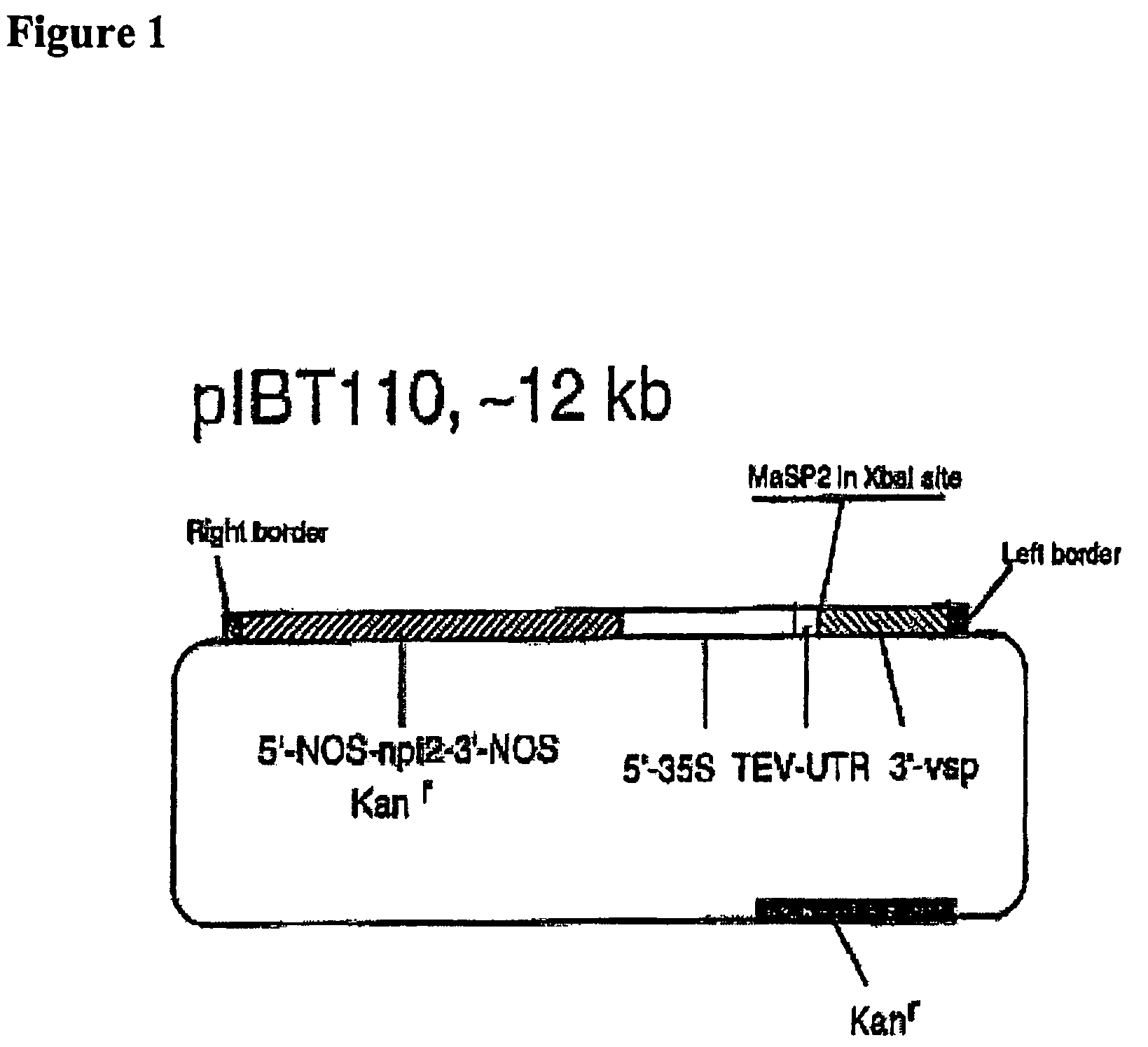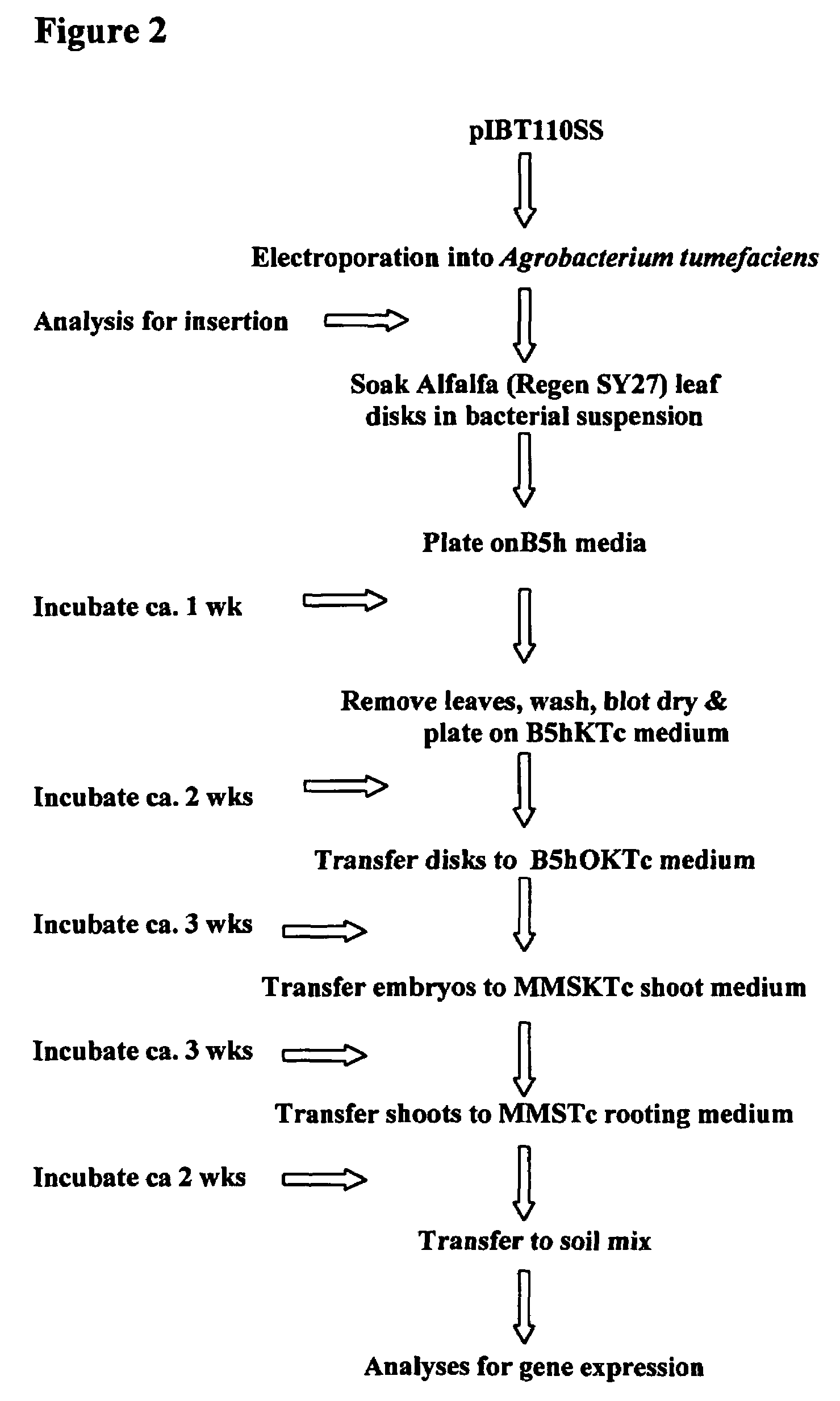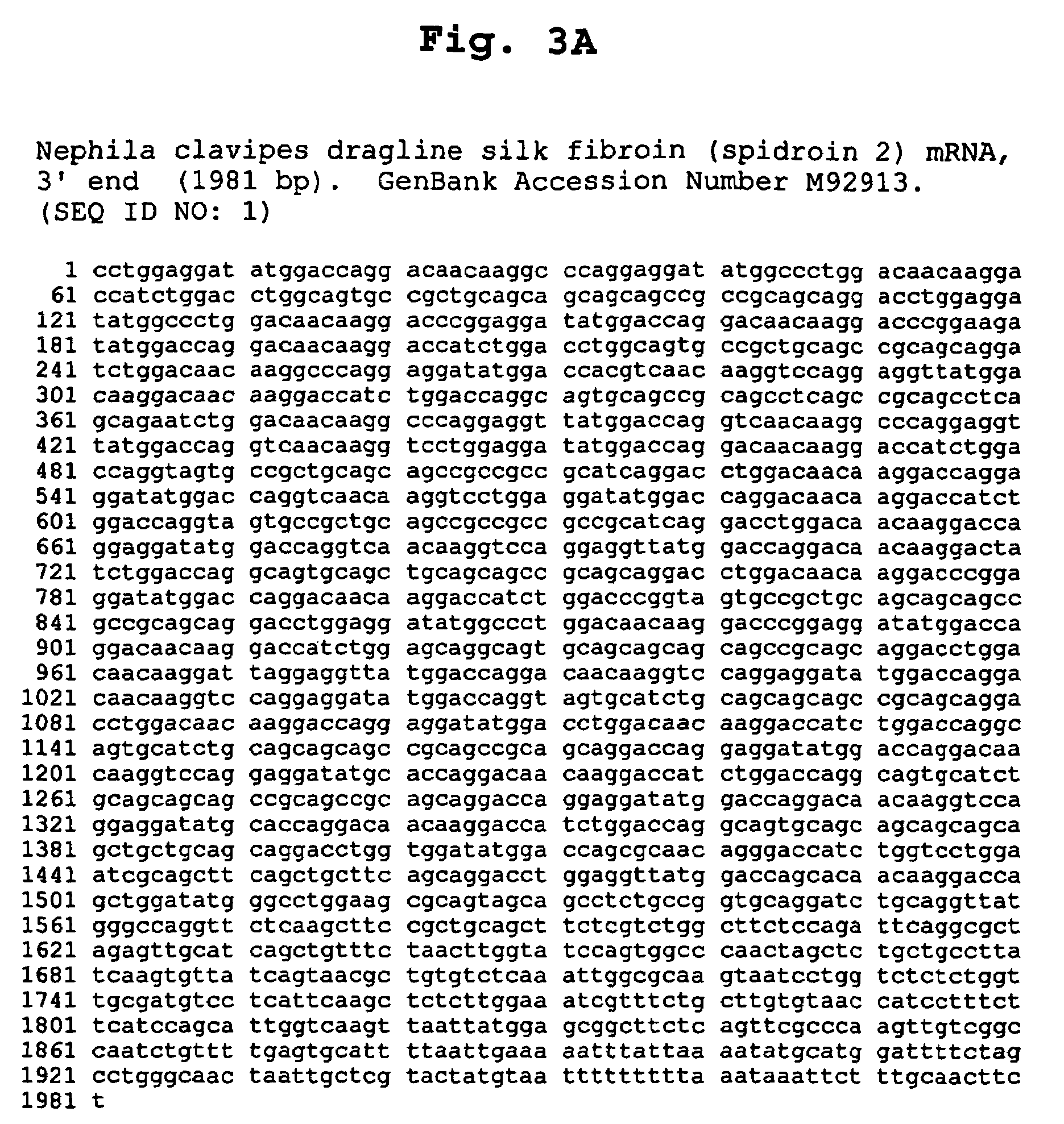Expression of spider silk proteins in higher plants
a technology of spider silk and protein, applied in the field of molecular biology and plant biology, can solve the problems of affecting the general economic exploitation of plants as protein factories, affecting the quality of spider silk fibers, and affecting the quality of spider silk fibers, and achieve the effect of superior quality
- Summary
- Abstract
- Description
- Claims
- Application Information
AI Technical Summary
Benefits of technology
Problems solved by technology
Method used
Image
Examples
example i
Generation of Arabidopsis Plants Expressing Synthetic Spider Silk Protein (SS1)
[0160]In order to express a spider silk protein in a transgenic plant, a nucleic acid sequence (SEQ ID NO: 3) which encodes a synthetic spider silk protein (SS1) was constructed and subcloned via multiple intermediate vectors into pIBT110. pIBT110 is a plant expression vector which has been shown to drive the expression of high levels of exogenous molecules (e.g., RNA and protein) in a variety of plant cells in vitro and in vivo, including Arabidopsis cells. As described below, pIBT110comprising SEQ ID NO: 3 was utilized in the transformation of Arabidopsis plants, which resulted in the expression of synthetic spider silk protein in these plants. Similar methods may be used to express other synthetic spider silk proteins, such as but not limited to, the synthetic spider silk proteins described herein. See Example IV.
[0161]The following protocols are provided to facilitate practice of the methods of the pr...
example ii
Generation of Arabidopsis Plants Expressing Native Spider Silk Proteins
[0173]Natural or native nucleic acid sequences, such as Nephila clavipes dragline silk fibroin mRNA (SEQ ID NO: 1; FIG. 3), Argiope trifasciata aciniform fibroin 1 (SEQ ID NO: 4; FIG. 9), Phidippus audax fibroin 1 (SEQ ID NO: 5; FIG. 10); Zorocrates sp. fibroin 1 (SEQ ID NO: 6; FIG. 11); Kukulcania MaSp (SEQ ID NO: 7; FIG. 12); Kukulcania MaSp (SEQ ID NO: 8; FIG. 13); Kukulcania MaSp (SEQ ID NO: 9; FIG. 14); Argiope MiSp (SEQ ID NO: 10; FIG. 15); and Argiope MiSp (SEQ ID NO: 11; FIG. 16) may be subcloned into a plant expression vector (e.g., pIBT110). Such methods may be used to express amino acid sequences comprising Argiope trifasciata aciniform fibroin 1 (SEQ ID NO: 15; FIG. 9), Phidippus audax fibroin 1 (SEQ ID NO: 16: FIG. 10), Zorocrates sp. fibroin 1 (SEQ ID NO: 17; FIG. 11); Kukulcania MaSps (SEQ ID NOs: 7, 8, 9; FIGS. 12, 13, and 14, respectively); and Argiope MiSps (SEQ ID NOs: 10 and 11; FIGS. 15 and 1...
example iii
Generation of Alfalfa Plants Expressing High Levels of Spider Silk Protein
[0174]As described above, the Nephila clavipes dragline silk fibroin synthetic DNA (SEQ ID NO: 3) was subcloned into the plant expression vector pIBT110. Alfalfa may be transformed with the pIBT110 empty vector as a control and with pIBT110-SS1, for example, according to the procedure of D. A. Samac (University of Minnesota, pers. communication). A flow chart depicting a process for transforming alfalfa and selecting positive transformants is provided in FIG. 2. Briefly, excised leaf discs may be soaked in an Agrobacterium suspension (described elsewhere herein) and subsequently replated on different media to generate callus, shoots, and roots.
[0175]In a preferred embodiment, alfalfa may be transformed to express any natural and / or synthetic spider silk protein described herein. This procedure is based upon co-cultivation of surface sterilized alfalfa leaves (variety Regen SY27) with A. tumefaciens for 15 minu...
PUM
| Property | Measurement | Unit |
|---|---|---|
| Fraction | aaaaa | aaaaa |
| Angle | aaaaa | aaaaa |
| Angle | aaaaa | aaaaa |
Abstract
Description
Claims
Application Information
 Login to View More
Login to View More - R&D
- Intellectual Property
- Life Sciences
- Materials
- Tech Scout
- Unparalleled Data Quality
- Higher Quality Content
- 60% Fewer Hallucinations
Browse by: Latest US Patents, China's latest patents, Technical Efficacy Thesaurus, Application Domain, Technology Topic, Popular Technical Reports.
© 2025 PatSnap. All rights reserved.Legal|Privacy policy|Modern Slavery Act Transparency Statement|Sitemap|About US| Contact US: help@patsnap.com



